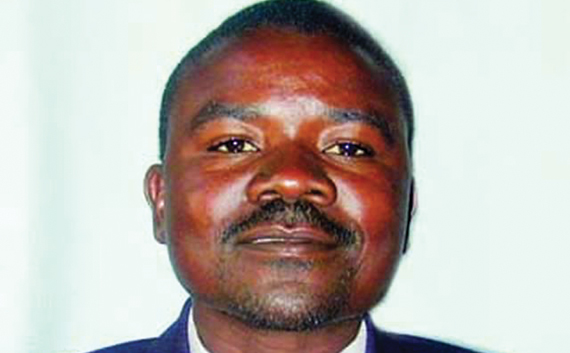
THE NATIONAL ASSEMBLY last week debated the proliferation of the poisonous cactus rosea plant in Matabeleland South. Below is Binga MP Joel Gabbuza Gabuza’s contribution as captured in the Hansard:
Mr Speaker Sir, I wish to add my voice on the motion before us on the invasive species. I wish to support the motion and also reflect on what the other honourable members contributed yesterday. This invasive species, if we have to follow what is being proposed in the motion, while I agree with the motion entirely, I do not seem to think what the motion finally proposes will be the right solution.
There is talk of financing EMA (Environmental Management Agency) so that they are able to control the very deplorable invasive species of tree. If we look at invasive species, this is not the first one in the country. Clearly, there have been other invasive species that EMA has not been able to control.
That is why I am of the contention that EMA will not be in a position to control these species, even if we gave them the money.
Currently, Mr Speaker, you are aware that Lake Chivero is infested with the invasive species. It is the species of some water weed that has proliferated on top of the lake and has made it so difficult to do some fishing, the water hyacinth. The invasive species have been with us for quite some time; EMA has done nothing about it and do not seem to have a solution to it.
Soon after the construction of the Lake Kariba, we have heard there was Salvinia , a lake weed also which made tourism so difficult, but nothing was done until naturally, it went away on its own.
What is this species and how do invasive species emerge? There were contentions yesterday. Mr Speaker, that perhaps if we burn up the species of this plant, we will eliminate it.
Some were talking about even digging it with shovels and picks. What you have to understand is that in an ecosystem, there is what is called natural elimination or natural selection. We have to ask ourselves why have we got these invasive species in Matabeleland South? How does it look like in the first place?
- Chamisa under fire over US$120K donation
- Mavhunga puts DeMbare into Chibuku quarterfinals
- Pension funds bet on Cabora Bassa oilfields
- Councils defy govt fire tender directive
Keep Reading
We are told that it belongs to a cactus family, which is the family of madhorofiya (prickly pear cactus tree). These are succulent plants. Why are they succulent? It is because they live and are supposed to flourish in deserts. They will only emerge when there is no water.
If you provide water, they will not emerge because the reality of human life of organisms growth, Mr Speaker is that organisms will only flourish where they do best. Where they do not do best, they will not flourish – that is why we do not find too many baobab trees in Manicaland where there is too much rain.
We only get baobab trees where the environment is suitable for baobab trees.
What we must be asking ourselves is: what is there in Matabeleland South that makes these species to proliferate? As long as those environmental conditions suitable for that species exist, no matter how much you try to eliminate the plant – it will still remain there and it will always come back.
Why are these trees succulent? I said it is because there is no water. They have to store water because the water is available for a short period of time in Matabeleland South and therefore, the water must be stored. These plants are thorny and why are they thorny?
It is because there is competition for water in those regions. In the process of competing for water, the plants will try to develop some thorns around it so that it is not affected by water seeking organisms around it. They spread fast because the season for rainfall in Matabeleland South is very short so they must quickly spread and reproduce.
Now, this is a typical desert plant. What does that tell us? The moment you see such species of trees which are thorny succulent, that is an indication to you that there desertification, which is the spread or extension of desert conditions.
Deserts are spreading into Matabeleland South mainly because of poor land management. Of course, the weather is included there, but mainly it is because of poor land management which is causing a lot of run-off, a lot of dryness in those areas because all the little water that falls quickly goes to other areas. So, those are desert conditions which we must deal with. I remember one of the honourable members, Hlongwane indicated that this is an effect of climate change.
Indeed, it could be climate change because desert conditions are associated with climate change.
So the solution is not just to burn down the species because the conditions for it to proliferate are still there and as long as those conditions are there, we will do very little to eliminate it. We have also Mr Speaker the issue of how best we can remove it or eliminate it.
The best in my view Mr Speaker is to introduce biological control systems like it was suggested that in other countries they introduced a feeder organism which would feed on that plant so that it finishes it off. Herbicides will not succeed much, we just need one organism that can eat or feed upon that plant then we have what we call positive feedback.
Once that organism finishes eating on these species, the organism will die because there will be no food for it in order to survive. So that is how eco-systems recycle themselves. I do not think that some of the proposals being put forward Mr Speaker will be the best. We could try, but I do not think that will be the best solution.
What possibly we can do is to come up with methods of increasing the water levels, perhaps the ground water level, maybe putting too many dams and also by ensuring that the area is well cultivated in order to accommodate whatever little rainfall in Matabeleland South.
But, the best is to make sure that we store water all over and that will recharge the underground water table. Once that is done the whole region is likely to be watered and if there is enough water, that species will not survive because the desert plant can only survive in an environment where desert conditions occur or prevail.
Mr Speaker, I just wanted to highlight some of these issues and hopefully, propose or add my voice and say perhaps one of the things that the government needs to do is to strengthen research organisations that have always been there in our country.
Quite clearly, you can see that the land management system under Agritex and the research institutions under the Agriculture, Mechanisation and Irrigation Development ministry are so weak that they may not even understand what is going on.
Clearly, that research which was done and proposals, it is so mean on facts to provide any solutions to this problem.
I thank you Mr Speaker, Sir.










